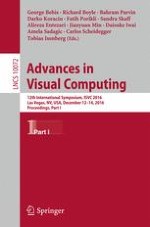2016 | Buch
Advances in Visual Computing
12th International Symposium, ISVC 2016, Las Vegas, NV, USA, December 12-14, 2016, Proceedings, Part I
herausgegeben von: George Bebis, Richard Boyle, Bahram Parvin, Darko Koracin, Fatih Porikli, Sandra Skaff, Alireza Entezari, Jianyuan Min, Daisuke Iwai, Amela Sadagic, Carlos Scheidegger, Tobias Isenberg
Verlag: Springer International Publishing
Buchreihe : Lecture Notes in Computer Science
